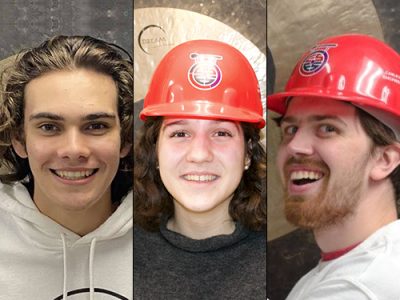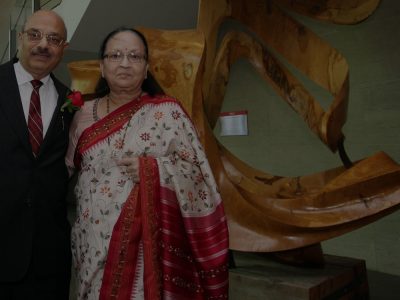By Tyrone Burke
Photos by Luther Caverly
If your phone could conform to your wrist, that Apple Watch would be obsolete. Electronics that can be bent, shaped and worn are coming – and they open up entirely new ways to use existing technology.
“It could make a computer game more engaging to play, allow you to squeeze your phone for notifications, or enable new ways to unlock your phone,” says Audrey Girouard, an associate professor in Carleton University’s School of Information Technology.
Girouard’s research pioneers novel interaction techniques with emerging computer interfaces, and it earned her a 2019 CS-CAN/Info-CAN Outstanding Young Computer Science Research Prize. The annual award is given to a small number of researchers working at Canadian university Computer Science departments, and recognizes excellence in research by an academic who has completed a PhD within the last 10 years.

Prof. Audrey Girouard
Assisting People with Disabilities by Innovating Device Interaction
“Instead of using a numeric password, you could bend each corner of the phone in a row,’’ says Girouard. “More tactile ways of interacting with devices can be useful for people with disabilities. People with vision impairments can face difficulties using a regular smartphone. Using screen readers or magnifiers in public make them wary of their information being stolen. They work well, but people can hear or look at your password at a distance. Bendable devices allow for more input options.”
At Girouard’s Creative Interactions Lab, she builds hardware prototypes with her team, and software applications that work with these novel devices. One of these prototypes is a bendable video game controller that enables novel ways of gaming. Girouard modified a standard rigid controller by splitting it in two and inserting a flexible bridge between the two halves. All of the standard buttons still work, but the controller has the added functionality of a flexible section in the middle.
“This can enhance a video game, or replace certain actions with bending and twisting,” Girouard says.
“It was not the best for navigating in a game, but participants really appreciated it for in-game actions – jumping, kicking and punching.”
Multidisciplinary Team Shares Skills and Perspectives
Girouard works directly with potential users of new technologies to make product designs intuitive and user friendly. She presents research participants with hands-on prototypes and asks them how a technology can be made better.
She also credits her multidisciplinary team of students for bringing a diversity of skills and perspectives to her lab’s research.
“At the Creative Interactions Lab, I have students from all different types of backgrounds,” says Girouard, whose upcoming research will focus primarily on wearables and e-textiles.
“Some have undergraduate degrees in Interactive Multimedia and Design, or Industrial Design. I’ve had students in Computer Science, Economics, English and Anthropology join the lab. We really build on each other’s skill sets.
“We have better prototyping skills because of those who have studied industrial Design. They really get to merge their interests and their skills, and pick up new skills — how to run a study, how to do software or hardware. That’s really a strength of the team.”
Monday, April 13, 2020 in Information Technology
Share: Twitter, Facebook



